Global Bread and Baked Food Market - Comprehensive Data-Driven Market Analysis & Strategic Outlook
The global bread and baked food market shall keep going from humble roots to soaring global leadership on an outstanding track. The world's oldest processed food, bread, came into existence as a simple mix of flour and water and then evolved gradually as humankind learned the secret of fermentation and baking techniques. Over centuries, artisanal small-scale manufacturing gave way to organized bakeries during the industrial era when mechanized ovens and mass manufacturing altered the consistency and distribution of baked products. Among the significant milestones were the introduction of sliced bread during the early 20th century and manufacture of pre-packaged bakery items, both of which modified consumers' approach towards daily staples.
- Global bread and baked food market worth around USD 165.6 Billion in 2025, growing at a CAGR of around 5.4% from 2032, with growth potential to exceed USD 239.5 Billion.
- Organic hold close to 23.6% market share, leading to innovation and widening applications through methodical research.
- Major trends fueling growth: Increasing demand for ready and convenient food items, Increasing consumption of healthier and whole-grain bakery foods
- Opportunities include: Expanding gluten-free and functional bakery product categories
- Key insight: The market will develop exponentially in value over the next decade, with robust growth opportunities.
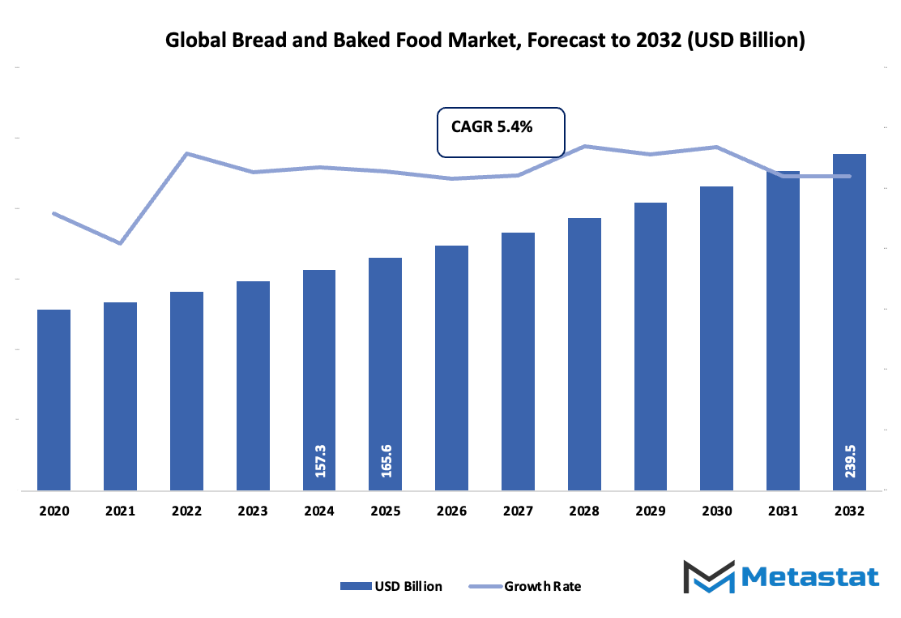
As the Bread and Baked Food industry develops all over the world, consumer values will further revolutionize the industry. Healthy options trends, such as whole-grain, reduced-sugar, and gluten-free, will reshape the character of offerings. Simultaneously, indulgent and specialty bakery products will also continue to remain strongly attractive, depicting a age-old urge for sensory and craftsmanship experience. The equilibrium between tradition and convenience will determine the way manufacturers innovate, bringing together long-time recipes with new ingredients and formats. Technological innovation will also determine the direction of the market. Production line automation, intelligent baking equipment, and computerized quality control will make the process more efficient and consistent, allowing companies to expand without compromising product integrity. Supply chain innovations will enable fresh bread to travel further from the bakery, while electronic platforms will provide new arenas for direct consumer interaction. Developments in regulatory issues will also play an important part within the industry.
Food safety regulations, labeling policies, and nutritional standards will continue to change, causing companies to modify recipes and processes. Trade between countries will affect the sourcing of ingredients and market access, further globalization of supply chains for baked products. Future of the world Bread and Baked Food market will be defined through a combination of tradition and novelty. Its destiny will be determined through the capacity to preserve traditional forms of baking while embracing consumer-inspired trends and technologically innovated methods, and thereby making the business nostalgic yet thrilling to generations ahead.
Market Segments
The global bread and baked food market is mainly classified based on Nature, Product, Distribution Channel.
By Nature is further segmented into:
- Organic: The organic segment of the global bread and baked food market will expand as people become more inclined towards chemical-free and healthy products. Consumers' demand for natural ingredients and clean labeling will propel the market due to the fact that people want products that enable them to live a healthy life and are eco-friendly.
- Traditional: Traditional products in the world Bread and Baked Food industry will remain high due to price acceptability and general availability. Standard production patterns and ongoing taste appeal will engender repeat purchase demand, ensuring that traditional brands are an ongoing part of everyday food purchasing habits.
By Product the market is divided into:
- Bread: Bread will continue to be the core segment of the worldwide Bread and Baked Food market, and the primary source of carbohydrate intake in everyday meals. Ongoing innovation of flavor and variety, including whole grain or multigrain, will fuel growth and customer demand.
- Pastries: Pastries in the international Bread and Baked Food market will appeal to luxurious-snack-pursuing consumers. Flavour choice, colourful and engaging packaging, and convenience will drive increased sales within urban and semi-urban regions.
- Cake: Cakes will be a substantial component of the international Bread and Baked Food market, which will be bought during special occasions and events. Variety of product, seasonal taste, and ornamentation will make them increasingly favoured by consumers.
- Cookie: Cookies will remain a craze in the worldwide Bread and Baked Food market as quick and easy-to-eat food. Novelty in taste, nutritional difference, and convenience packaging will keep them in the market all the time.
- Biscuit: Biscuits in the global bread and baked food market will continue to be favored by customers on the basis of value and adaptability. Variants such as sweet, savoury, and health biscuits will keep them in regular consumption and retail sale.
- Pie: Pies will remain in demand steadily within the global bread and baked food market for sweet and savory types. Seasonal, regional, and easy-to-eat formats will steal their share of the market.
- Scone: Scones within the global bread and baked food market will appeal to specialist consumer segments looking for bakery items produced using quality ingredients. New flavors and convenient packaging will drive modest but increasing demand.
- Others: Special and niche bread foods in the international Bread and Baked Food industry will comprise items that are responsive to emerging consumer trends. Unconventional ingredients and local specialties will be used to vary product lines and appeal to various consumer segments.
By Distribution Channel the market is further divided into:
- Hypermarket/Supermarket: Hypermarkets and supermarkets will be key channels in the global Bread and Baked Food market, offering wide product lines and price competitiveness. Convenient shopping experience and promotion programs will engage substantial numbers of shoppers.
- Specialty Stores: global bread and baked food market's specialty stores will emphasize niche and premium products. Personal service, quality assurance, and special amenities will drive growth in the segment.
- Retail Shops: Retail shops will remain to be in the global bread and baked food market through the offer of availability and daily buying options. Local availability and staggered inventory availability will assist in sustained demand.
- Online Sales Channel: Online sales channels in the global bread and baked food market will grow with doorstep delivery and convenience facilities. Ease of ordering, subscription, and digital promotions will be appealing to time-starved consumers looking for convenience.
- Others: Other distribution channels for the global bread and baked food market will be institutions, food service, and direct sales. Special orders and bulk orders will facilitate other income streams and market development.
|
Forecast Period |
2025-2032 |
|
Market Size in 2025 |
$165.6 Billion |
|
Market Size by 2032 |
$239.5 Billion |
|
Growth Rate from 2025 to 2032 |
5.4% |
|
Base Year |
2024 |
|
Regions Covered |
North America, Europe, Asia-Pacific, South America, Middle East & Africa |
By Region:
- Based on geography, the global bread and baked food market is divided into North America, Europe, Asia-Pacific, South America, and the Middle East & Africa.
- North America is further divided into the U.S., Canada, and Mexico, whereas Europe consists of the UK, Germany, France, Italy, and the Rest of Europe.
- Asia-Pacific is segmented into India, China, Japan, South Korea, and the Rest of Asia-Pacific.
- The South America region includes Brazil, Argentina, and the Rest of South America, while the Middle East & Africa is categorized into GCC Countries, Egypt, South Africa, and the Rest of the Middle East & Africa.
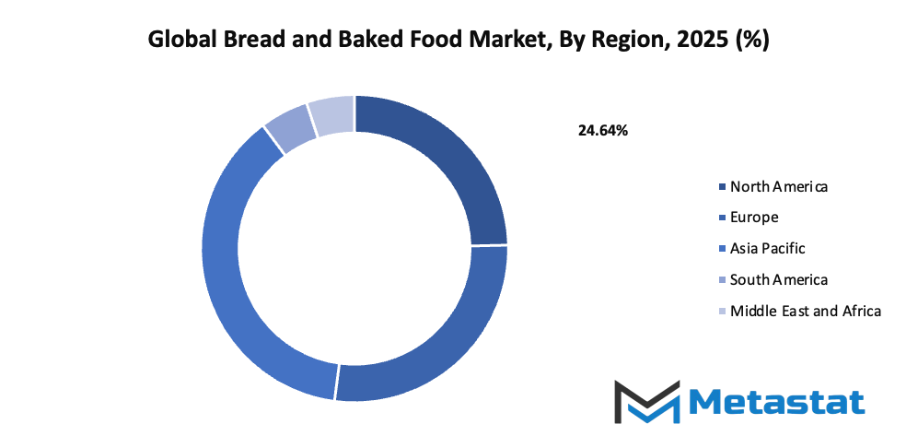
Growth Drivers
- Rising demand for convenient and ready-to-eat food products: The global bread and baked food market will benefit from the increasing preference for products that save time and effort. Consumers are looking for items that can be easily consumed at home, work, or on-the-go, which will drive higher sales and market expansion.
- Growing adoption of healthier and whole-grain bakery options: The global bread and baked food market will experience growth due to the rising awareness of healthier lifestyles. Products made with whole grains, lower sugar, or added nutrients will attract health-conscious buyers, encouraging manufacturers to introduce more nutritious bakery options to meet this demand.
Challenges and Opportunities
- Fluctuating prices of raw materials such as wheat and sugar: The global bread and baked food market faces uncertainty from varying costs of essential ingredients. Price changes for wheat, sugar, and other components can affect production expenses, forcing companies to adjust pricing strategies and manage profit margins carefully.
- Short shelf life and preservation challenges of baked goods: The global bread and baked food market will encounter difficulties due to the perishable nature of many products. Maintaining freshness during storage and transport is crucial, requiring better packaging solutions, preservatives, or innovative techniques to extend shelf life and reduce food waste.
Opportunities
- Expansion of gluten-free and functional bakery product segments: The global bread and baked food market will gain from rising interest in specialty products such as gluten-free, protein-enriched, or fiber-rich bakery items. Expanding these segments allows companies to cater to dietary needs and lifestyle preferences, opening new revenue channels and attracting a broader consumer base.
Competitive Landscape & Strategic Insights
The global bread and baked food market presents a competitive landscape shaped by both well-established international companies and emerging regional players. Industry leaders such as Grupo Bimbo, Flowers Foods, Mondelez International, Huntley & Palmers, Campbell Soup Company, General Mills, Yamazaki Baking Co., Ltd., Associated British Foods plc, Bimbo Bakeries USA Inc, Warburtons, Baker’s Oven Patisseries, Hostess Brands LLC, Premier Foods Group Limited, Britannia Industries Limited, and Nestlé have established strong market positions through consistent innovation, extensive distribution networks, and brand recognition. These companies continue to influence market trends, set quality standards, and drive product diversification.
At the same time, emerging regional competitors are creating new opportunities by focusing on localized tastes, flexible supply chains, and niche product offerings. These players often capitalize on consumer demand for healthier options, artisanal products, and functional baked goods. The rise of regional competitors will encourage established companies to rethink strategies and adopt more agile approaches to maintain their market share.
Strategic insights suggest that future growth will not rely solely on traditional manufacturing and distribution methods. Companies that integrate technology into production, leverage data-driven insights for consumer behaviour, and develop sustainable practices will gain a competitive edge. Automation in production and advanced logistics systems will improve efficiency and reduce costs, while innovative product development will attract younger and health-conscious consumers. Furthermore, collaborations between international giants and local businesses will likely expand reach and diversify offerings, creating a more dynamic and competitive market environment.
Market size is forecast to rise from USD 165.6 Billion in 2025 to over USD 239.5 Billion by 2032. Bread and Baked Food will maintain dominance but face growing competition from emerging formats.
From a futuristic perspective, the market will see increasing pressure to adapt to changing consumer lifestyles, including rising demand for on-the-go products and premium, plant-based, or fortified baked goods. Companies that anticipate these trends and invest in research, technology, and consumer engagement will shape the future competitive landscape. In addition, sustainability will become a key differentiator, as environmentally conscious practices influence purchasing decisions. Overall, strategic foresight combined with operational excellence will define success in the Bread and Baked Food market as global and regional players continue to compete and innovate.
Report Coverage
This research report categorizes the Bread and Baked Food market based on various segments and regions, forecasts revenue growth, and analyzes trends in each submarket. The report analyses the key growth drivers, opportunities, and challenges influencing the Bread and Baked Food market. Recent market developments and competitive strategies such as expansion, type launch, development, partnership, merger, and acquisition have been included to draw the competitive landscape in the market. The report strategically identifies and profiles the key market players and analyses their core competencies in each sub-segment of the Bread and Baked Food market.
Bread and Baked Food Market Key Segments:
By Nature
- Organic
- Conventional
By Product
- Bread
- Pastries
- Cake
- Cookie
- Biscuit
- Pie
- Scone
- Others
By Distribution Channel
- Hypermarket/Supermarket
- Specialty Stores
- Retail Shops
- Online Sales Channel
- Others
Key Global Bread and Baked Food Industry Players
- Grupo Bimbo
- Flowers Foods
- Mondelez International
- Huntley & Palmers
- Campbell Soup Company
- General Mills, Inc.
- Yamazaki Baking Co., Ltd.
- Associated British Foods plc
- Bimbo Bakeries USA Inc
- Warburtons
- Baker’s Oven Patisseries
- Hostess Brands LLC
- Premier Foods Group Limited.
- Britannia Industries Limited
- Nestlé
WHAT REPORT PROVIDES
- Full in-depth analysis of the parent Industry
- Important changes in market and its dynamics
- Segmentation details of the market
- Former, on-going, and projected market analysis in terms of volume and value
- Assessment of niche industry developments
- Market share analysis
- Key strategies of major players
- Emerging segments and regional growth potential



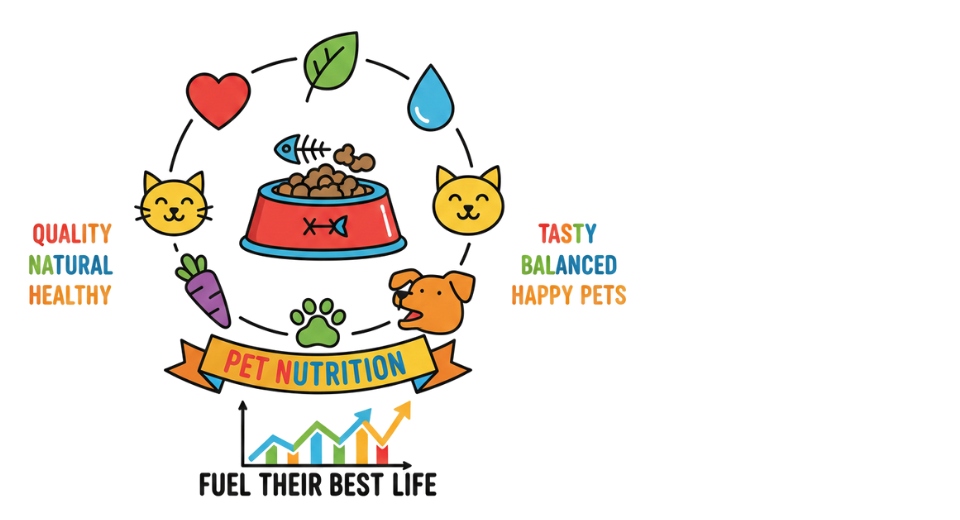
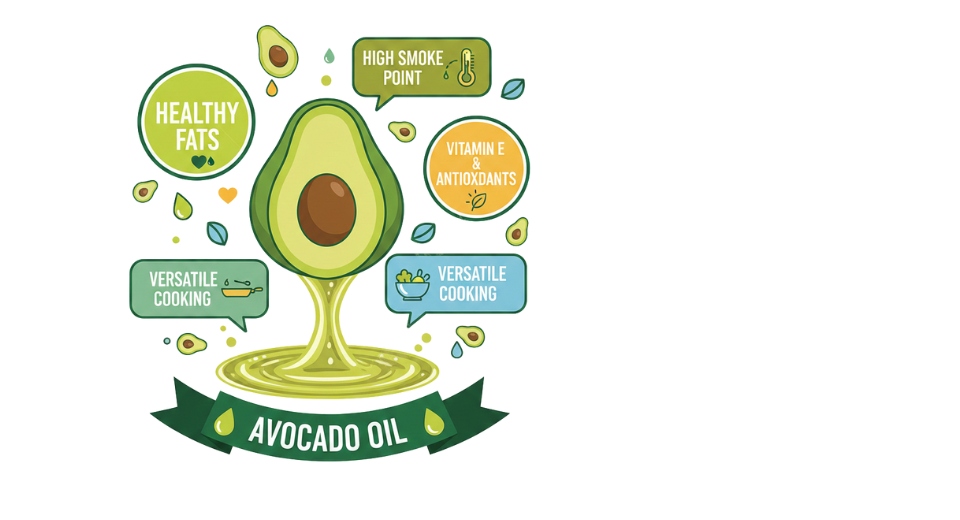
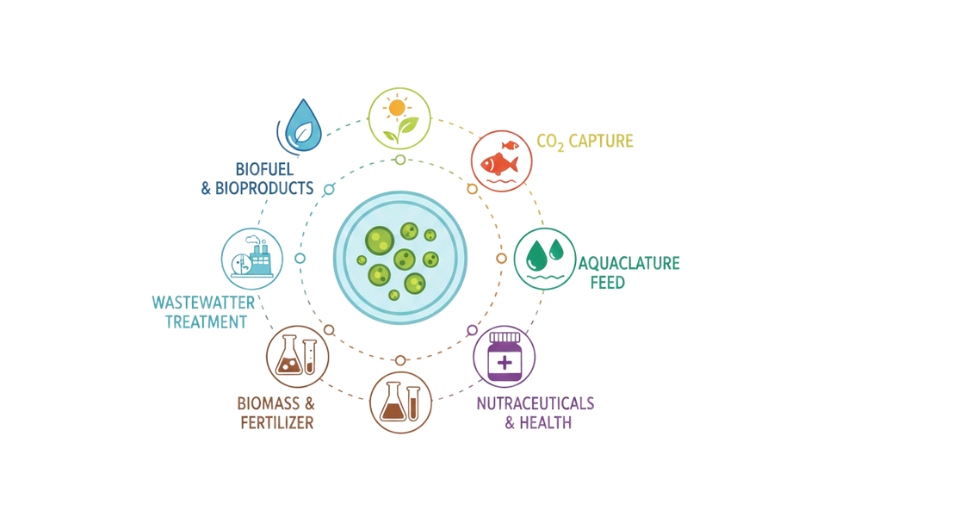
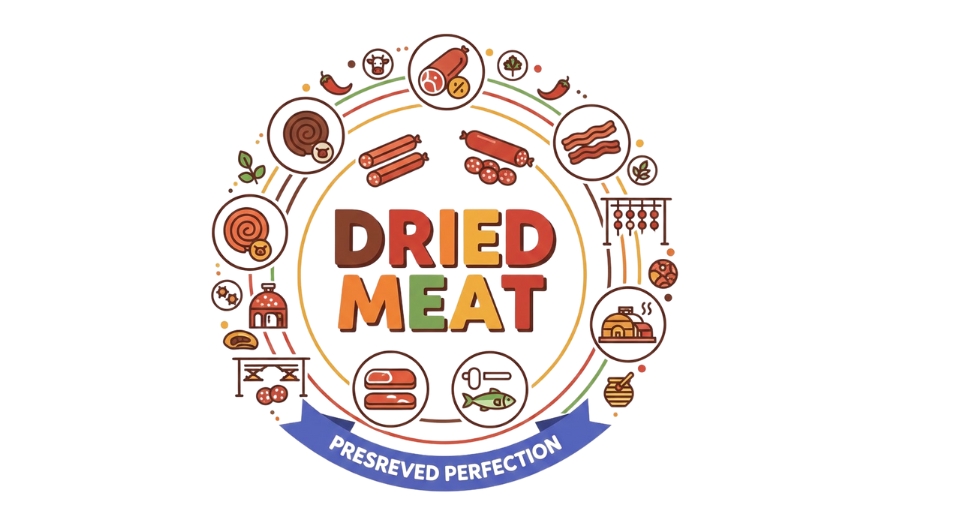

 US: +1 3023308252
US: +1 3023308252






